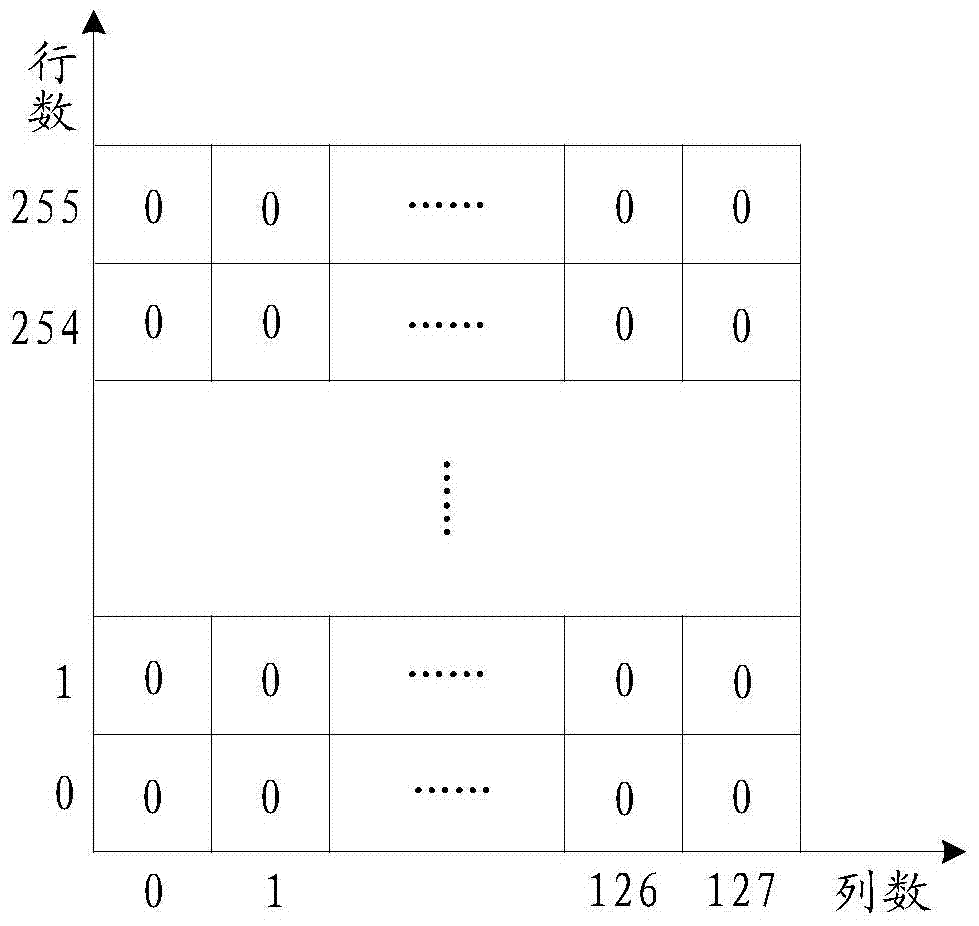Cache allocation method and device
A cache allocation and sub-cache technology, applied in the computer field, can solve problems such as cache block division and unreasonable allocation
- Summary
- Abstract
- Description
- Claims
- Application Information
AI Technical Summary
Problems solved by technology
Method used
Image
Examples
Embodiment 1
[0032] Embodiment 1 of the present invention provides a buffer allocation method, such as figure 2 mentioned, specifically include:
[0033] S201. From different preset lengths, determine a preset length whose length is not less than the buffer length to be allocated.
[0034] S202. From the determined preset lengths, determine a preset length with the smallest length.
[0035] S203. Determine a sub-cache block whose usage state is idle according to the bit values in the two-dimensional bitmap corresponding to each sub-cache block divided based on the preset length with the smallest length determined in S202, representing the use status of each sub-cache block, Wherein, the two-dimensional bitmap is a corresponding two-dimensional bitmap established for each sub-cache block divided based on different preset lengths, and each bit in the two-dimensional bitmap corresponds to each bit in the two-dimensional bitmap One-to-one correspondence between the sub-cache blocks, the b...
Embodiment 2
[0055] In Embodiment 2 of the present invention, a buffer allocation method is provided, such as Figure 4 shown, including the following steps:
[0056] S401. From different preset lengths, determine a preset length whose length is not less than the buffer length to be allocated.
[0057] S402. From the determined preset lengths, determine a preset length with the smallest length.
[0058] S403. From the configured sub-cache blocks, determine the sub-cache blocks corresponding to the minimum preset length determined in S402 and whose usage status is free, and allocate the determined free sub-cache blocks.
[0059] S404. Update the usage state of the allocated sub-cache block to occupied.
[0060] S405. From each sub-cache block divided based on each first preset length, determine a first sub-cache block that has one of the following positional relationships with the allocated sub-cache block, wherein the first preset length is all preset lengths Each preset length except t...
Embodiment 3
[0067] In Embodiment 3 of the present invention, a buffer allocation method is provided, such as Figure 5 shown, including the following steps:
[0068] S501. From different preset lengths, determine a preset length whose length is not less than the buffer length to be allocated.
[0069] S502. From the determined preset lengths, determine a preset length with the smallest length.
[0070] S503. From the configured sub-cache blocks, determine the sub-cache blocks corresponding to the minimum preset length determined in S502 and whose usage status is free, and allocate the determined free sub-cache blocks.
[0071] S504. Update the usage state of the allocated sub-cache block to occupied.
[0072] S505. From each sub-cache block divided based on each first preset length, determine a first sub-cache block that has one of the following positional relationships with the allocated sub-cache block, wherein the first preset length is all preset lengths Each preset length except t...
PUM
 Login to View More
Login to View More Abstract
Description
Claims
Application Information
 Login to View More
Login to View More - R&D
- Intellectual Property
- Life Sciences
- Materials
- Tech Scout
- Unparalleled Data Quality
- Higher Quality Content
- 60% Fewer Hallucinations
Browse by: Latest US Patents, China's latest patents, Technical Efficacy Thesaurus, Application Domain, Technology Topic, Popular Technical Reports.
© 2025 PatSnap. All rights reserved.Legal|Privacy policy|Modern Slavery Act Transparency Statement|Sitemap|About US| Contact US: help@patsnap.com



